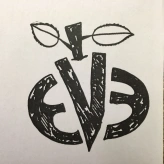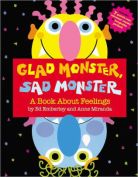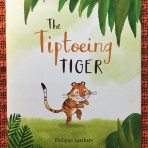
How does one start to meditate? I started meditating about 5 years ago. I wanted to start before that but just never sat down on my own and meditated. When I started, I had little knowledge of “how-to” meditate. I thought you needed to sit absolutely still, in total silence and think of nothing. Yeah….you can guess how well that went.
But overtime, it seemed to take hook. I was never sure if I was meditating correctly and often felt I was not doing it right or well, but I stuck at it and it stuck to me. First, I found that I needed to meditate in the morning, because if I waited until later in the day, it did not get done. So every morning, after I made breakfast for my son, I would sit on the other sofa and meditate…listening to him munch his bagel and gulp his milk. I felt like a pro! Look at me sitting here, not moving, blocking out the sounds around me….but I still felt like I was not doing it right and it was not “affecting” or “effecting” me correctly. But I stuck to it. And it stuck to me. It was oddly satisfying and if I did not do it, I felt like I was missing something that I wanted. My brain wanted it. My body wanted it. My soul wanted it.
Enter Kundalini. In Kundalini, everything is organized and makes sense. The exercises have aim and purpose and are felt physically, mentally and energetically. There are physical movements or stillness encased by specific breathing patterns, chants and mudras. This allows for the seeing, the hearing and the sensing of of what’s happening within minutes of starting a practice. The truth is in the doing. Here form really follow function. Kundlini fits all bodies, all sizes, all adaptations without getting lost in the “what my body should look like” thoughts.
Also, Kundlini is a gold mine when it comes to varied meditations. Kundalini offers metal, physical and emotional distractions that ope the gateway for meditation that is wholly enjoyable and accessible.
Two Meditations to Start Your Journey:
Kirtan Kriya/ Sa Ta Na Ma Meditation
Kirtan Kriya, often referred to as SA TA NA MA meditation, is the most important meditation in Kundalini Yoga. If you can do only one meditation, this is it. It will readjust and align you to bring balance into your body, mind and spirit and thus your life. It is your teacher. It is your best friend.
The bottom line is that this meditation works. All you have to do is do it. You can trust the process and the technology.
Directions:
Sit with a straight spine. Bring your mental focus to the brow point/3rd eye point.
Chant SA TA NA MA.
While chanting alternately press the thumb with the four fingers. Press hard enough to keep yourself awake and aware of the pressure. Keep repeating in a stable rhythm and keep the hand motion going throughout the whole meditation.

SA press the thumb and the pointer or Jupiter finger together with pressure.
TA press the thumb and the middle or Saturn finger together.
NA press the thumb and the ring or Sun finger together.
MA press the thumb and the pinky or Mercury finger together.
The Jupiter/Pointer finger brings in knowledge, expands our field of possibilities and releases us from limitations.
The Saturn/Middle finger gives us patience, wisdom and purity.
The Sun/Ring finger gives us vitality and aliveness.
The Mercury/Pinky finger aids clear communication.
Visualize or feel each individual sound come in the crown chakra at the top of the head, down through the middle of the head and out to infinity through the third eye. This is very important and must be done with each sound. It is an essential part of the cleansing process. If this part of the meditation is not done, you may experience a headache.
While doing the meditation, you may experience pictures of the past come up like on a movie screen in your mind. Let them dance in front of your eyes and release them with the mantra. This is part of the cleansing of the subconscious mind. If emotions come up, you can also incorporate them in the chanting, i.e. if you feel anger then chant out the anger. Whatever you experience is OK. Do not try to avoid or control your experiences. Simply be with what is going on and go through it. It is all part of the cleansing process.
Morning Meditation
6 minutes version:
- 1 min out-loud
- 1 min whisper
- 2 min in-head (can add tongue movements) with hand movements
- 1 min whisper
- 1 min out-loud.
This meditation can be done for 6-31 minutes. Just keep all the segments equal length (the silent section is repeated twice). It can really be done for as little as 3 minutes (30 sec, 30 sec, 1 min, 30 sec, 30 sec)
31 minute version:
- 5 min out loud
- 5 min whisper
- 10 min in-head (tongue moving) with hand movement
- 5 min whisper
- 5 min out-loud
- [1 min listen inside, hear the mantra, experience it. No hand movements.]
Evening Meditation
Sa Ta Na Ma Variation
3-30 minutes
Rest hands in lap. Fingers interlaced with the pads of the thumbs pressing into each other
Rest eyes gently looking at tip of nose; eyes may close.
Sniff in 4-counts, mentally saying Sa-Ta-Na-Ma.
Hold breath while mentally repeating the mantra 4 times.
Breath out through the nose in two strokes while mentally chanting Wahe/Guru. (Wahe/Wow! + Guru/Inner teacher = Cheers to my inner super hero!)
To end: Breath in for the count of 4. Hold breath for the count of 7. Breathe out through a circle mouth, making a whooshing sound, for the count of 8. Repeat 4-8x.
Practice Timing:
3 minutes: Affects your circulation, blood chemistry and stability of the blood. The increased blood circulations begins, distributing enhanced neuroendocrine secretions throughout the body.
7 minutes: Brain patterns start to shift from the static of beta waves, to calmer alpha waves and ultimately to deep relaxing delta waves. Simultaneously, the magnetic force surrounding the body increases in strength.
11 minutes: The pituitary gland, glandular system and the nerves start to learn and change. The sympathetic and parasympathetic nervous systems begin to accommodate the increased energy.
22 minutes: Anxiety producing thoughts in the subconscious begin to clear. Your three minds (negative, positive, and neutral) start to work together so your mental integration changes. 22 is the infinite number of longing and gives mastery of the mental realm.
31 minutes: Affects your whole mind and your aura. Endocrinological balance is achieved, as is balance of the chakra’s of the ethereal body. This balance persists throughout the day, and is reflected by changes in moods and behavior.
Amount of days:
11 days: 11 is the number of Infinity in the material world and conqueror of the physical realm. So it’s like the first step to break loose from the entanglement of the mind.
40 days: Helps to break negative habits that block you from the expansion possible through the Kriya or mantra, if done 40 days straight in a row
90 days: When you practice the Kriya or mantra for 90 days straight it will establish a new habit in your conscious and subconscious mind. It will change you in a very deep way.
120 days: When you commit to practice the Kriya or mantra for 120 days without skipping a day it will confirm the new habit of consciousness. The positive benefits of the Kriya get integrated permanently into your psyche.
1000 days: This will allow you to master the new habit of consciousness that the Kriya or mantra has promised. No matter what the challenge, you can call on this new habit to serve you.




































































